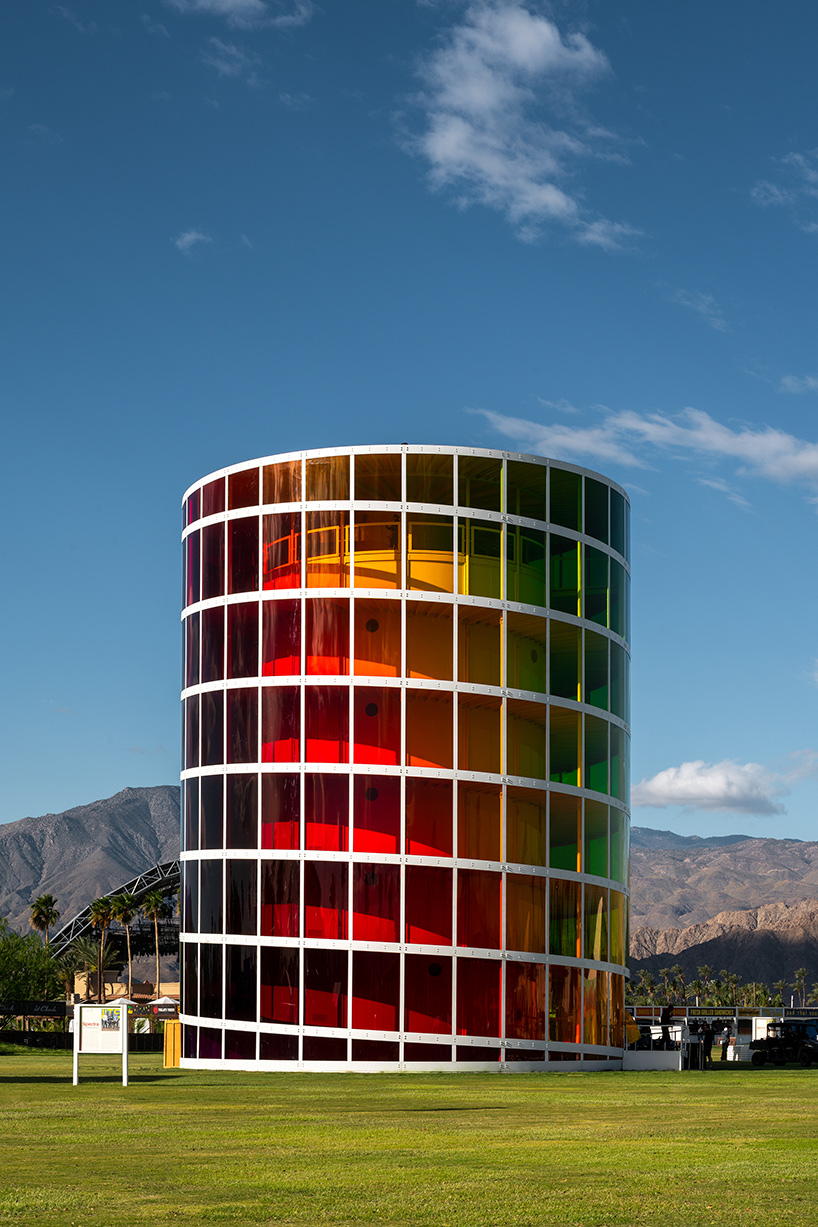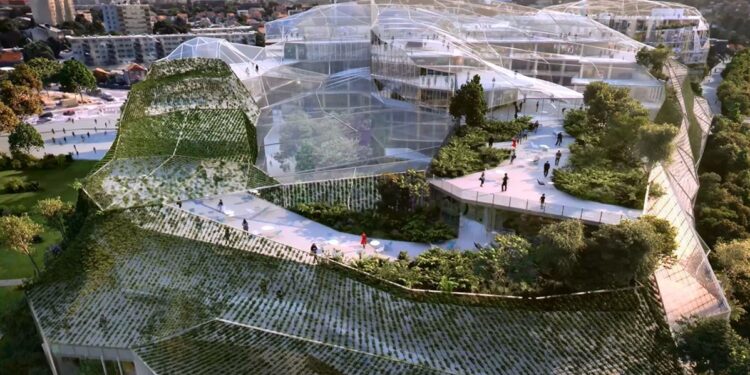In an era defined by accelerating change, unforeseen crises, and the imperative for flexible urban development, a revolutionary approach to city planning and infrastructure is rapidly gaining prominence. Pop-up city solutions, once relegated to niche events or emergency responses, are now emerging as a dynamic and essential answer to a myriad of modern challenges. From disaster relief efforts to large-scale cultural festivals, and from rapidly deploying essential services to reimagining urban spaces, these temporary yet highly functional constructs are proving that adaptability is the new cornerstone of metropolitan design. This comprehensive article will delve into the compelling factors driving the rise of these ephemeral urban interventions, dissecting the diverse types and groundbreaking technologies that enable their creation, exploring their profound benefits for communities and economies, offering practical insights into their implementation, and highlighting how these innovative strategies are fundamentally reshaping the future of urbanism.
Why Temporary Urbanism Matters

For centuries, cities were built with permanence in mind. Grand structures, fixed infrastructure, and long-term planning dominated urban development. While this enduring approach has given us iconic skylines and resilient communities, it often struggles to respond effectively to the rapid pace of contemporary life. Unpredictable environmental shifts, sudden demographic changes, large-scale events, and the ever-present threat of natural disasters demand a more nimble, responsive framework. The rigid, slow-moving nature of traditional urban development can be a significant impediment to progress and problem-solving.
This is where pop-up city solutions step in. They represent a paradigm shift: an acknowledgment that not every urban need requires a permanent, multi-decade construction project. Instead, pop-up solutions embrace the concept of temporary urbanism, delivering immediate, scalable, and often highly specialized infrastructure designed for a specific purpose or duration. Imagine a fully functional hospital deployed within days after an earthquake, a vibrant festival site appearing overnight to host hundreds of thousands, or a flexible retail hub revitalizing a dormant urban block. This approach is driven by an urgent need for speed, cost-effectiveness, environmental sustainability, and community engagement. It’s about creating agile urban spaces that can emerge, adapt, and even disappear, leaving minimal lasting impact, yet delivering maximum immediate value. It’s about leveraging innovation to provide swift, tailored answers to complex urban problems, fundamentally redefining what it means for a city to be truly adaptable and resilient.
The Driving Forces Behind the Pop-Up Phenomenon
Several powerful, interconnected trends and pressing global needs are fueling the rapid expansion and widespread adoption of pop-up city solutions:
A. Rapid Urbanization and Population Shifts:
Cities worldwide are experiencing unprecedented growth, leading to immense pressure on existing infrastructure. Pop-up solutions offer a quick, often modular way to create temporary housing, commercial spaces, or public facilities to accommodate swelling populations without lengthy, costly permanent construction.
B. Disaster Relief and Emergency Response:
In the aftermath of natural disasters (earthquakes, floods, hurricanes) or humanitarian crises, there is an immediate and critical need for temporary shelters, medical facilities, distribution centers, and command posts. Pop-up solutions provide rapid deployment of essential services, saving lives and facilitating recovery.
C. Mega-Events and Festivals:
Large-scale events like the Olympic Games, World Expos, music festivals (e.g., Burning Man), or major conferences require significant temporary infrastructure for accommodation, venues, retail, and services. Pop-up cities are ideal for creating these self-contained, short-lived ecosystems efficiently.
D. Economic Efficiency and Cost Reduction:
Compared to permanent construction, pop-up solutions often require less capital investment, shorter construction times, and reduced labor costs. Their reusability and potential for rapid deployment make them highly economically attractive for temporary needs.
E. Flexibility and Adaptability:
Urban environments are dynamic. Pop-up solutions allow planners to test new concepts, respond quickly to changing community needs, or adapt spaces for evolving commercial demands without the irreversible commitment of permanent structures. They are inherently designed for change.
F. Sustainability and Reduced Environmental Impact:
Many pop-up solutions utilize modular, reusable components and sustainable materials, minimizing waste and resource consumption. Their temporary nature also reduces long-term environmental footprints on specific sites, and they can often be dismantled and relocated.
Deconstructing the Pop-Up
What differentiates a “pop-up city solution” from traditional construction or a simple temporary tent? It’s a combination of design philosophy, operational strategy, and inherent attributes that make them uniquely suited for specific urban challenges.
Core Characteristics of Pop-Up City Solutions
A. Temporality and Defined Lifespan:
The defining characteristic is their non-permanent nature. They are designed to exist for a specific duration, ranging from a few days to several months or even a few years, after which they are dismantled, relocated, or repurposed.
B. Rapid Deployment and Assembly:
Pop-up solutions are engineered for speed. They often utilize prefabricated, modular components that can be quickly transported to a site and assembled with minimal on-site construction, drastically reducing traditional build times.
C. Modularity and Scalability:
Many pop-up structures are built from standardized, interchangeable modules. This allows for easy scalability (adding or removing units as needed) and adaptability to different site conditions or functional requirements.
D. Portability and Reusability:
Components are typically designed to be easily disassembled, transported, and reassembled at a different location. This reusability extends their lifecycle and reduces waste, contributing to sustainability.
E. Functionality and Purpose-Driven Design:
Despite their temporary nature, pop-up solutions are highly functional, designed to serve specific needs – whether it’s providing shelter, retail space, medical services, entertainment venues, or office environments.
The Versatile Forms of Pop-Up Urbanism
The application of pop-up city solutions is remarkably diverse, spanning a wide array of functional needs and creative expressions within the urban environment. Each type addresses a specific set of challenges or opportunities.
Diverse Types of Pop-Up City Solutions
A. Emergency Shelters and Disaster Relief Camps:
Rapidly deployable housing units, medical tents, field hospitals, and logistical hubs designed to provide immediate aid, shelter, and services in humanitarian crises or disaster zones. These prioritize speed, durability, and essential functionality.
- Examples: UNHCR refugee camps, temporary hospital extensions during pandemics, emergency housing units.
B. Event Infrastructure (Festivals, Exhibitions, Olympics):
Temporary stadiums, concert venues, dining areas, retail kiosks, ticketing booths, media centers, and accommodation villages for large-scale public events that require a vast, temporary infrastructure.
- Examples: Olympic villages, Glastonbury Festival structures, temporary pavilions at World Expos.
C. Temporary Retail and Experiential Pop-Ups:
Brand activations, fashion pop-up shops, seasonal markets, food truck parks, and experiential showrooms that utilize temporary structures to create unique, engaging commercial spaces for limited durations.
- Examples: Fashion brand pop-ups in high-traffic urban areas, Christmas markets, temporary art installations with integrated retail.
D. Modular Housing and Affordable Living Solutions:
Prefabricated modular homes or apartment units designed for quick assembly to address housing shortages or provide interim housing, offering a flexible response to escalating urban housing crises.
- Examples: Temporary housing for homeless populations, rapid deployment workforce housing, student accommodation.
E. Flexible Co-working Spaces and Innovation Hubs:
Temporary office pods, shared workspaces, and meeting rooms that can be set up quickly in underutilized areas, catering to the needs of remote workers, startups, or project-based teams.
- Examples: Pop-up co-working spaces in vacant retail units, temporary innovation labs for hackathons.
F. Urban Greening and Public Space Revitalization:
Temporary parks, community gardens, seating areas, and pedestrian zones created on vacant lots, streets, or neglected spaces to enhance urban aesthetics, provide green infrastructure, and encourage public gathering.
- Examples: Parklets (temporary mini-parks in parking spaces), pop-up playgrounds, temporary plazas.
G. Art Installations and Cultural Venues:
Temporary galleries, performance stages, interactive art installations, and cultural exhibition spaces that transform public areas, often with a focus on immersive experiences and community engagement.
- Examples: Temporary art pavilions at city festivals, pop-up cinemas, interactive public art projects.
Enabling Pop-Up Innovation

The sophisticated capabilities of modern pop-up city solutions are inextricably linked to advancements in various technological domains. These innovations transform temporary structures from basic shelters into highly functional, integrated urban components.
Key Technologies Powering Pop-Up City Solutions
A. Advanced Modular Construction:
Utilizing factory-built, standardized units (modules) that are transported to the site and assembled. This technology ensures precision, quality control, faster build times, and reduced on-site waste. Materials often include steel frames, insulated panels, and lightweight composites.
B. Sustainable and Recycled Materials:
Increasing use of materials with lower environmental impact, such as recycled steel, reclaimed timber, rapidly renewable bamboo, and advanced composites made from recycled plastics. This aligns with the temporary nature and often promotes reusability.
C. Smart Building Technologies and IoT Integration:
Incorporating Internet of Things (IoT) sensors for real-time monitoring of energy consumption, air quality, security, and occupancy. Smart climate control, lighting, and waste management systems optimize efficiency and user experience.
D. Renewable Energy Solutions (Solar, Wind, Battery Storage):
Integration of off-grid or grid-tied renewable energy sources, such as flexible solar panels, small wind turbines, and advanced battery storage systems, to power pop-up units sustainably, especially in remote or emergency settings.
E. Rapid Prototyping and 3D Printing (for Components):
Utilizing 3D printing for rapid prototyping of custom components or even printing smaller structural elements on-site, accelerating design iterations and enabling highly customized parts for unique pop-up designs.
The Multifaceted Benefits of Agile Urbanism
The impact of pop-up city solutions extends far beyond their immediate functional purpose, offering profound advantages for urban development, community well-being, and economic vitality.
Advantages of Implementing Pop-Up City Solutions
A. Rapid Response and Deployment:
The primary benefit is the ability to quickly deploy functional infrastructure in response to urgent needs (disasters, large events, immediate housing shortages), significantly reducing critical response times.
B. Cost-Effectiveness and Reduced Financial Risk:
Lower initial capital expenditure compared to permanent construction, combined with reusability, makes pop-ups a financially prudent choice for temporary or experimental projects, mitigating long-term investment risks.
C. Enhanced Flexibility and Adaptability:
Pop-ups can be easily reconfigured, expanded, shrunk, or relocated, allowing cities to adapt to changing demographics, economic conditions, or unforeseen circumstances without being locked into rigid, permanent structures.
D. Stimulation of Local Economies and Entrepreneurship:
Temporary markets, retail spaces, and event venues can inject vitality into dormant urban areas, creating opportunities for small businesses, local artisans, and temporary employment.
E. Sustainability and Environmental Responsibility:
By utilizing modular, reusable components and sustainable materials, pop-ups reduce construction waste, minimize site impact, and often integrate renewable energy, contributing to greener urban development.
Considerations for Implementation
Despite their numerous advantages, the successful implementation of pop-up city solutions is not without its complexities. Addressing these challenges requires careful planning, stakeholder collaboration, and innovative policy frameworks.
Key Challenges and Considerations for Pop-Up City Solutions
A. Regulatory and Permitting Hurdles:
Existing urban planning regulations and building codes are often designed for permanent structures, making it challenging to obtain permits for temporary installations. Navigating these bureaucratic processes can be complex and time-consuming.
B. Infrastructure Integration:
Connecting temporary structures to existing utilities (water, sewage, electricity, internet) can be challenging, especially in remote areas or where existing infrastructure is strained or non-existent.
C. Long-Term Sustainability (Beyond the Temporary):
While individual units might be reusable, the energy consumption for repeated transport, assembly, and disassembly, or the environmental impact of disposal of non-reusable components, needs careful life-cycle assessment.
D. Public Acceptance and Nuisance Concerns:
Temporary structures might face resistance from local residents concerned about noise, traffic, waste, or visual blight, especially if not properly managed or if community engagement is lacking.
E. Security and Safety Standards:
Ensuring adequate security for temporary sites and meeting safety standards for diverse public use (especially for large gatherings) requires rigorous planning and ongoing management.
Conclusion
The burgeoning rise of pop-up city solutions is far more than a transient architectural trend; it is a fundamental re-imagining of urban planning, driven by an urgent need for adaptability, efficiency, and human-centric design. In a world characterized by unpredictability, these temporary yet highly functional interventions are proving that the most powerful urban solutions are often those built with agility and impermanence in mind. The concept that Pop-Up City Solutions Transform Urbanism is no longer theoretical, but a tangible reality unfolding across the globe.
By embracing cutting-edge technologies, fostering collaborative partnerships, and prioritizing community needs, we are stepping into an era where cities can rapidly evolve, respond to crises with unprecedented speed, and continually reinvent themselves. The future of urbanism is not just about permanent concrete and steel, but also about intelligent, flexible, and responsive structures that can emerge, serve, and adapt, leaving a positive legacy without a permanent footprint. As we continue to navigate a dynamic world, these agile urban solutions will be key to building resilient, vibrant, and innovative metropolises for generations to come. The future city is not static; it is a living, breathing, and sometimes, a beautifully pop-up entity.











